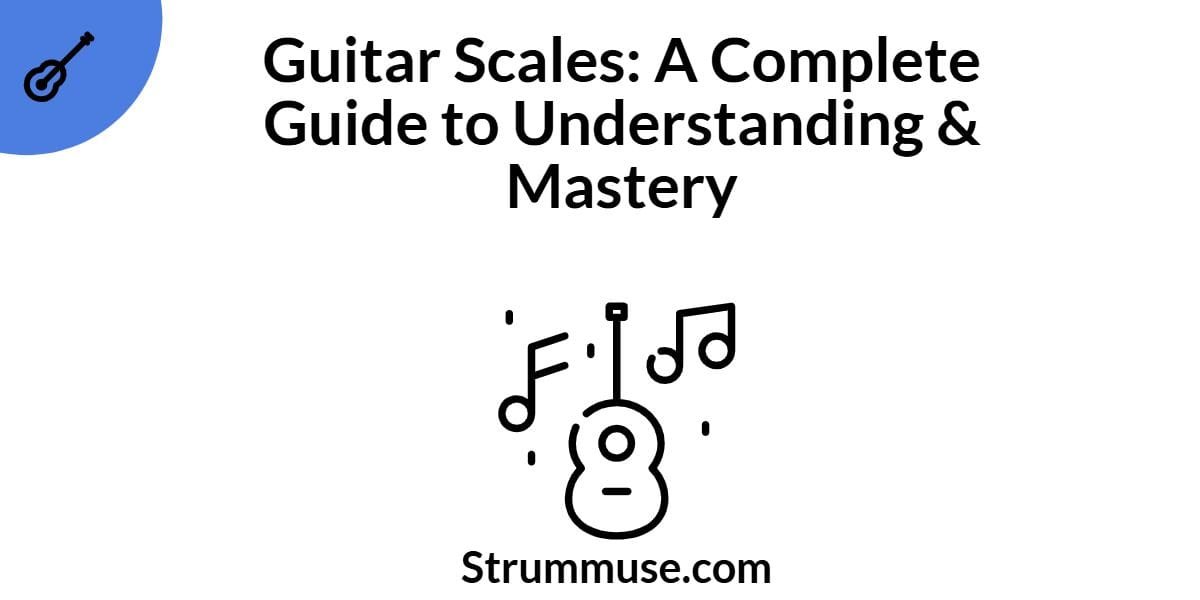
When I first picked up a guitar, I didn’t even know what a “scale” was. I just wanted to strum songs and sound good. But every time I’d search for tutorials, I’d hear, “Learn your scales!” And honestly, it felt like homework.
But once I truly understood what guitar scales are—and more importantly, how to use them—it completely transformed the way I played. I want to help you feel that same ‘a-ha!’ moment.
Let’s walk through what guitar scales really are, why they matter, and how you can remember them (without going nuts!).
What Is a Guitar Scale?
A scale is simply a collection of notes played in a specific sequence. Think of it like a musical alphabet.
In Western music, we have 12 unique notes, and scales are patterns built from those notes.
The most popular type? The major scale—you’ve probably heard it before:
Sa – Re – Ga – Ma – Pa – Dha – Ni – Sa
That’s a C major scale in action.
In guitar, we play these notes using a pattern of frets and strings. Once you know these patterns, you can apply them across the fretboard.
Why Learn Guitar Scales at All?
You might be wondering—why bother with scales when you just want to play your favorite songs?
Here’s why scales matter:
- Improve finger strength and dexterity
- Understand melodies and solos
- Make your improvisation sound musical
- Unlock music theory without it feeling overwhelming
Whether you want to shred like Slash or fingerpick like Arijit Singh, scales are the foundation that hold everything together.
Types of Guitar Scales You Should Know
There are many kinds of scales out there, but let’s keep it simple and focus on the essentials.
1. Major Scale
- Bright, happy sound
- Follows this pattern of intervals: W-W-H-W-W-W-H (W = whole step, H = half step)
Example: C Major Scale – C D E F G A B C
2. Minor Scale
- Moodier, emotional tone
- Natural minor interval pattern: W-H-W-W-H-W-W
Example: A Minor Scale – A B C D E F G A
3. Pentatonic Scale
- Only 5 notes (instead of 7)
- Easier to remember and play
- Used in rock, blues, pop, Bollywood – basically everywhere
Example: A Minor Pentatonic – A C D E G
4. Blues Scale
- Like the pentatonic but with an extra ‘blue’ note
- Perfect for expressive solos and emotional phrases
Example: A Blues Scale – A C D D# E G
5. Modes (for advanced learners)
- Variations of the major scale
- Includes Dorian, Phrygian, Mixolydian, etc.
You don’t need these right away, but good to know they exist.
How to Practice and Remember Guitar Scales
Here’s the part that trips most people up—not just learning scales, but remembering them.
So how do you get these patterns locked into your brain (and fingers)?
My Real-Life Practice Strategy:
- Choose ONE scale per week – Don’t try to learn everything at once
- Use a metronome – Start slow and build speed over time
- Say the note names aloud – Reinforces both ears and mind
- Improvise mini solos – Apply the scale creatively
- Play the same scale in different keys – Use the same pattern starting from a different root note
Bonus Tip: Use backing tracks in your scale’s key to jam and experiment. It’s fun and educational.
The Science Behind Memorization
Let’s face it—memorizing scale shapes can feel robotic.
But here’s a cognitive trick: Spaced Repetition.
Instead of cramming, space out your scale sessions over a few days. Your brain stores information better this way. Apps like Anki or even flashcards can help.
Also, connect scales to real songs. If you’re learning the G major scale, play a song that’s in G major. It reinforces your learning naturally.
Guitar Scale Patterns You Should Master First
Start with these two:
C Major Scale (Open Position)
E|——————-0–1–3– B|————–1–3——— G|——–0–2————— D|–0–2——————— A|–3———————— E|————————–
A Minor Pentatonic Scale (5th Fret Position)
E|—————————5–8– B|———————5–8——- G|—————–5–7———– D|———–5–7—————– A|—–5–7———————– E|–5–8————————–
These patterns are worth their weight in gold. Memorize them, and you’ll unlock a world of improvisation.
Internal Links to Boost Your Learning
Want to keep progressing with confidence?
- Understanding Guitar Tablature
- Mastering Guitar Strumming Patterns
- The Ultimate Beginner’s Guide to Learning Guitar
- All About Major Chords
- All About Minor Chords
FAQ’s
Q: Do I need to learn every scale?
A: No. Start with major, minor, and pentatonic scales. Master them before moving on.
Q: How long will it take to memorize a scale?
A: With 15 minutes a day, you can internalize a scale pattern in about a week.
Q: Should I use tabs or notation to learn scales?
A: Start with tabs—they’re more visual and easier for beginners.
Q: What’s the best scale for solos?
A: The minor pentatonic is king for solos—especially in blues, rock, and Bollywood music.
Why Trust StrumMuse?
StrumMuse is built by real guitar learners and players. We don’t just throw theory at you—we break it down from our own trial-and-error experiences.
- Experience: Advice based on real learning journeys
- Expertise: Trusted by thousands of guitar learners worldwide
- Authority: We prioritize depth over surface-level hacks
- Trust: Everything we recommend has been personally tested
Final Takeaway
Scales may seem intimidating—but they’re your secret weapon for becoming a confident guitarist.
Take it one pattern at a time. Be patient. Stay consistent. Before you know it, you’ll go from “What’s a scale?” to “Watch this solo!”
And the best part? It’ll sound like you.
Keep strumming, keep growing, and never stop learning.

